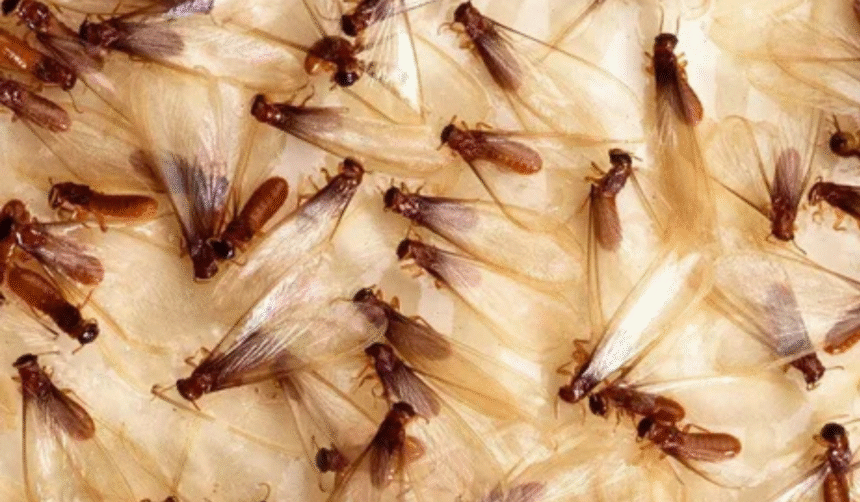Introduction
After a rainstorm, you may notice an immediate increase in insect activity both indoors and outdoors. Many species use the moisture and humidity as the perfect cue to begin breeding, resulting in sudden population surges that can quickly become a nuisance. Being proactive when it comes to managing these pests is essential for both comfort and safety. For homeowners seeking to keep their lawns, patios, or outdoor living spaces insect-free after rain, outdoor pest control measures are effective solutions tailored for post-rain conditions.
While the sight of insects after rainfall is common, understanding which ones breed most aggressively and why can make all the difference in preventing infestations. Having a plan in place for ongoing pest management will help protect your home, yard, and health throughout wet seasons.
Common Insects That Breed After Rain
- Mosquitoes: Mosquitoes are well-known for laying eggs in stagnant water left behind by rain. This can result in rapidly increasing populations within days. Mosquito control is critical, as these insects carry diseases including West Nile virus, Zika, and malaria.
- Desert Termites: These insects swarm shortly after rain, also called agricultural termites. While they pose little threat to buildings, they feed on grass and organic material, impacting gardens and landscaping.
- Ants: Heavy rains often flood underground ant nests, forcing colonies to relocate. As a result, you might notice more ants seeking food and shelter indoors as they escape wet conditions.
- Cockroaches: Cockroaches thrive in warm, humid environments and frequently invade homes after rain showers. They seek out places with available food and moisture.
Why Rainfall Triggers Insect Breeding
Rainfall provides insects with two vital resources—water and humidity. Puddles, clogged gutters, and even small amounts of standing water in planters or toys can serve as breeding grounds, especially for mosquitoes. Other insects, like ants and cockroaches, use the dampness as an opportunity to move into new spaces after their habitats have been disturbed. Damp soil and increased vegetation growth also attract insects looking for food and nesting material.
Since post-rain environments can be challenging to manage, investing in outdoor pest control solutions can keep your property more comfortable and healthier year-round.
Health Risks Associated with Post-Rain Insect Surges
Increased numbers of insects can present multiple health concerns. Mosquitoes are the most notorious, spreading viruses and parasites to humans and animals. Cockroaches and ants can contaminate food sources, while cockroaches may trigger allergies and asthma. While termites don’t pose direct health threats, their feeding on vegetation can indirectly affect people with mold or decaying matter allergies. Recognizing these risks early will help you take action before populations become unmanageable.
Preventive Measures to Control Insect Breeding After Rain
- Eliminate Standing Water: Regularly inspect your property for water-filled containers, clogged drains, bird baths, and plant saucers. Remove or drain water frequently to cut off mosquito breeding sites.
- Seal Entry Points: Repair screens, caulk around doors and windows, and close small cracks in foundations. This helps prevent ants and cockroaches from moving indoors.
- Maintain Cleanliness: Promptly clean up crumbs, spills, and pet food to make your home less appealing to pests seeking food after rain disrupts their usual sources.
- Use Natural Deterrents: Essential oils such as citronella, peppermint, and eucalyptus can repel many insects. Diatomaceous earth sprinkled in problem areas is a non-toxic way to kill crawling bugs by dehydrating their exoskeletons.
Regular Yard Maintenance is Key
Routine yard work reduces shelter for breeding insects. Keep your grass short, trim vegetation away from buildings, and dispose of fallen leaves or rotting plants. This discourages insect populations and deprives them of hiding spots, especially after rain.
When to Seek Professional Pest Control
If home prevention doesn’t keep pest populations under control, recurring or large-scale infestations warrant a call to professional pest control services. Experts can identify breeding sites you might miss, use targeted treatments, and establish a comprehensive long-term plan to minimize future outbreaks. They may also provide specialized services like perimeter barrier treatments, mosquito fogging, or environmentally friendly extermination options.
Conclusion
Proactively managing insect populations after rainfall protects your property and your family’s well-being. By staying vigilant and implementing prevention strategies, you can prevent the surge in insect numbers that often follows wet weather. Strategic use of outdoor pest control methods and knowing when to bring in the experts ensures that your outdoor and indoor environments remain comfortable, healthy, and enjoyable year-round.






